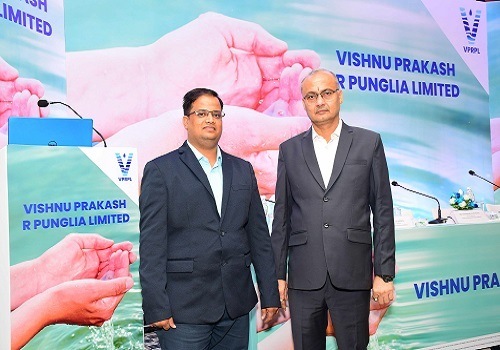1. At a Glance
Vishnu Prakash R Punglia Ltd (VPRPL), once the hot new kid of the infra-block, has suddenly found itself stuck in a traffic jam of debt, execution delays, and investor heartbreak. With amarket cap of ₹1,013 crore, the stock trades around₹81.3, down nearly70% from its 52-week high of ₹346, proving that even engineers can overestimate load capacity—especially in their own balance sheets.
For Q2 FY26, the company clockedsales of ₹296 crore(down 11.7% QoQ) andPAT of ₹3.65 crore(down 84.6% QoQ). That’s not a typo; that’s a near wipeout. With anEPS of ₹0.29, anEV/EBITDA of 12.2, andP/E of 32.9, one wonders—what are investors valuing here? Optimism or delusion?
The company boasts aROCE of 11.4%,ROE of 7.81%, and aDebt to Equity ratio of 0.91, which means the company has borrowed nearly as much as it owns. Theworking capital days shot up to 157, and debtors now take217 daysto pay—basically, projects finish before clients do.
Its order book of ₹5,086 crore looks shiny, but execution speed matters. If “Make in India” had a meme category, VPRPL’s FY26 Q2 would be a solid contender for “Expectation vs Reality.”
2. Introduction
Once upon a time (okay, in FY24), VPRPL was the infrastructure darling of Rajasthan—an EPC powerhouse laying pipelines, railways, and roads faster than politicians could cut ribbons. Today, it’s a sobering reminder thatgrowth without cash flowis like a bridge without pillars—bound to collapse eventually.
The company, incorporated in 1986, has decades of experience, 500+ construction machines, and contracts across10 states and 1 Union Territory. But now, the biggest construction it’s managing is its own credibility.
In the last six months,revenues fell 18.3%andprofits tanked 75%. Investors who entered during the IPO hype are now experiencing “Value Erosion Projects” instead of “Water Supply Projects.” Promoter holding fell from67.8% to 58.6%, a classic sign of “we need liquidity, bro.”
To be fair, this is a tough industry. Infra EPC companies depend on timely government payments, project mobilizations, and working capital cycles. When these slip, even a ₹5,000 crore order book becomes a ₹5,000 crore headache.
So, grab your helmet and reflective vest—this is one bumpy ride through India’s newest infra rollercoaster.
3. Business Model – WTF Do They Even Do?
VPRPL’s business model is built on designing, constructing, and maintaining infrastructure for Central and State governments, autonomous bodies, and private clients. Translation:they make the pipelines, not the water.
Their four key verticals are:
- Water Supply Projects (WSP)– Contributing76% of revenuein H1 FY25. Includes pipelines, tanks, and water treatment systems. Rajasthan is their home turf, but they’re now active in UP, Gujarat, and Assam too.
- Railway Projects (13%)– Construction of railway tracks, bridges, and platforms. Let’s just say IRCON isn’t losing sleep yet.
- Road Projects (6%)– New entrant here, but growing. Expect potholes—financial and literal.
- Irrigation Projects (5%)– Canals, pumping stations, and pressurized pipelines. Ironically, their liquidity isn’t as fluid.
The company prides itself on being an “integrated EPC player” with its own fleet of 500+ construction equipment. It’s like saying, “We brought our own JCBs, but forgot to bring in the cash.”
Their “AA class” contractor status with Rajasthan PHED gives them credibility, but recentlegal and tender bans(temporarily stayed by courts) add a dramatic courtroom subplot to their corporate screenplay.
4. Financials Overview
| Metric (₹ Cr) | Q2 FY26 | Q2 FY25 | Q1 FY26 | YoY % | QoQ % |
|---|---|---|---|---|---|
| Revenue | 295.7 | 296.4 | 276.4 | 0% | 7% |
| EBITDA | 24.3 | 38.3 | 31.9 | -36.5% | -23.8% |
| PAT | 3.65 | 21.2 | 7.01 | -82.8% | -47.9% |
| EPS (₹) | 0.29 | 1.70 | 0.56 | -82.9% | -48.2% |
The company’s Q2 FY26 is a classic case of “profit missing in action.” Despite stable revenues, margins and profits have collapsed. Theoperating marginhas
fallen to 8.23% from 12.93% a year ago.
If EPS were a cricket score, last year’s innings was 170 runs; this quarter’s is 29. P/E looks expensive only because “E” is shrinking faster than a puddle in Rajasthan.
5. Valuation Discussion – Fair Value Range
Let’s crunch this the EduInvesting way (and cry responsibly):
A. P/E Method:Current EPS (TTM): ₹2.47Industry P/E: 20→ Fair Value Range = ₹49 to ₹60 (20–24x conservative band)
B. EV/EBITDA Method:EV = ₹1,684 CrEBITDA (FY25 TTM) = ₹129 CrEV/EBITDA = 13x → slightly above peers (KEC ~10x, NBCC ~12x)→ Fair Range = ₹1000–₹1300 Cr EV → per share = ₹60–₹75
C. DCF (Simple 10–15% Growth, 11% Cost of Capital)Future FCF erratic, but average -₹207 Cr operating cash FY25 → DCF can’t justify premium.
Fair Value Range (Educational Purpose Only):₹55–₹75
Disclaimer: This fair value range is for educational purposes only and not investment advice.
6. What’s Cooking – News, Triggers, Drama
The last few months have been pure Bollywood drama:
- Promoters sold 9.15% stakein Oct 2025, pledging another 1.78%. Proceeds were given as aninterest-free loan—because nothing says “confidence” like cashing out and lending back your own money.
- GST demand of ₹25.13 crore? Dropped by DGGI in October 2025. Big relief, small joy.
- CARE Ratings downgrade (Jun 2025)toBBB Negative/A3 Negative—because “execution challenges and liquidity stress” aren’t phrases you want on your credit report.
- Bombay HC quashed a tax notice (Oct 2025)—one legal win to offset a dozen financial headaches.
- New orders galore:
- ₹779.15 mn (≈₹78 Cr) ROB project from Jaipur Development Authority (Jul 2025)
- ₹2,696.85 mn JV contract with NWR, Jaipur (Feb 2025)
- ₹2,475.5 mn contract by BHEL (Feb 2025)
- ₹513.99 mn order from JDA (Jan 2025)
So, projects keep coming, but execution and cash flow are the Achilles’ heels. Revenue visibility is strong, but

